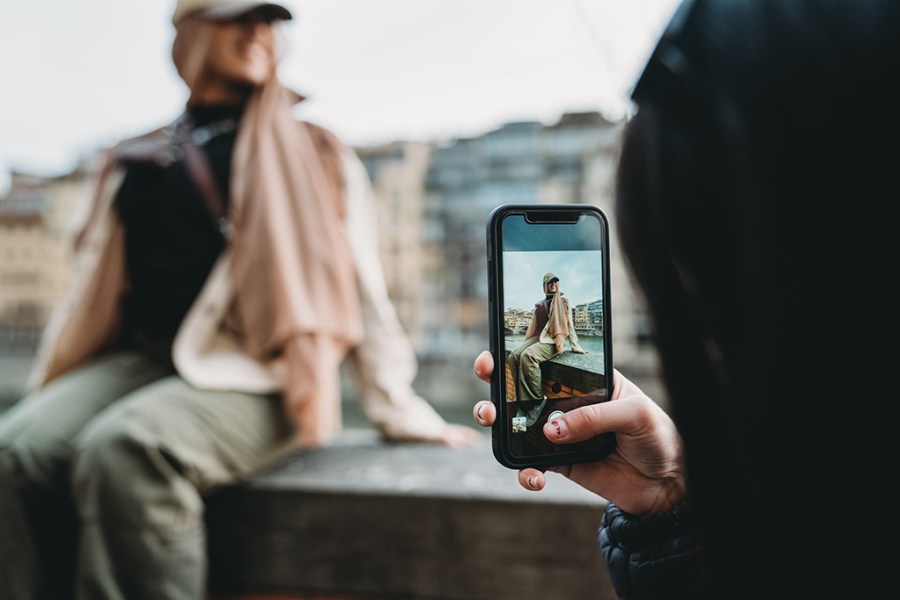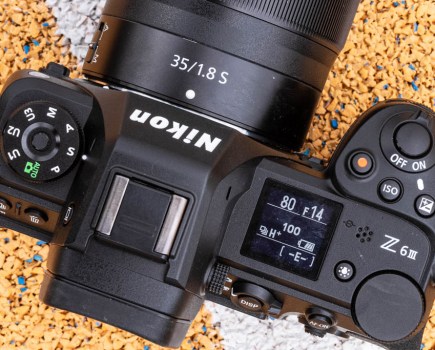The best smartphones for portrait photography feature highly capable portrait modes, crisply separating subject from background for perfect people pictures. Nowadays, we expect the best camera phones to have great portrait modes as a matter of course – but the ones I’ve selected for this list are a cut above the rest.
Portrait modes recreate the classic shallow depth of field effect you would normally see when shooting with a standard camera and wide-aperture lens. These have improved dramatically as phones have improved – but they don’t always get better with every single upgrade. As such, I haven’t just selected the latest flagships for this list, as sometimes slightly older phones can offer better functionality or value for money when it comes to portraiture specifically.
Remember to shop around for various contract deals, and you may also already be able to find some of these models second-hand. All of these phones are ones that the AP technical team and I have tested and reviewed, and you can see samples of our portrait photographs taken with them throughout.
The best smartphones for portrait photography: our quick list
Looking for the best deal on the best smartphones for portraits? Not only will you find the best camera phones for portraits, but you’ll also find some of the best deals, as our ‘Buy now’ buttons are set to automatically take you to the best prices, from trusted retailers, plus you’ll also find a list of other retailers below each phone, so you can find the right deal for you.
- Best Android phone for portrait photography: Samsung Galaxy S24 Ultra: Buy now
- Best iPhone for portrait photography: iPhone 15 Pro: Buy now
- Best premium phone for portrait photography: Xiaomi 15 Ultra: Buy now
- Best smaller phone for portrait photography: Google Pixel 9 Pro: Buy now
- Best cheap phone for portrait photography: OnePlus 12: Buy now
Why you can trust Amateur Photographer
We spend many hours testing every product we recommend, in detail, in a variety of situations and shooting scenarios, and only use experts for our reviews, so you can be sure that you’re getting the best products. Find out more about our expert writers.
Read on to learn more about each of these phones, including key specs and the results of our review team’s testing…
Best smartphones for portrait photography
Best Android
Best Android phone for portrait photography: Samsung Galaxy S24 Ultra

Amateur Photographer verdict
A fantastic all-rounder with a superb Portrait Mode, the Galaxy S24 Ultra dependably produces perfect people pictures.- Three high-resolution sensors
- Portrait mode works with Night Mode
- Beautiful display
- S-Pen can be used as camera trigger
- AI editing is gimmicky and not that useful
- Middling selfie camera
The Samsung Galaxy S23 Ultra was our clear pick as the best overall smartphone in 2023, and the S24 Ultra continued the tradition by winning Smartphone Camera of the Year at our 2024 AP Awards. The Galaxy S25 Ultra will no doubt do well too – though for reasons we’ll explore, the S24 Ultra is still our pick for portraits.
With its multiple lenses, comprehensive camera app and excellent screen, the S24 Ultra is a fantastic all-rounder. It has a dedicated Portrait mode which you can use to either take headshots or leave a little more context. It puts in a good job with portraits here, creating fairly natural outlines and also works well with other non-human subjects such as pets.
You don’t have to shoot in Portrait mode if you don’t want to, with the standard setting also producing excellent results – albeit without the same kind of shallow depth of field effect you might wish to have. If you want to shoot in raw format, you can, but again not in Portrait mode – head to the Pro mode and enable DNG recording to do that. You can shoot with the 3x telephoto lens in Pro mode to get a typical portrait focal length, while also taking advantage of the flexibility of raw shooting.

As with the S23 Ultra, one of the key headlines of the S24 Ultra is its 200 megapixel main sensor. Images are only actually output in 200MP if you choose a specific mode, otherwise the standard output is 12MP. In theory this sounds useful for portraits, but in practice, extra detail isn’t hugely obvious and unless you want to print your portraits at a huge size, 200MP is overkill. If you’re shooting after dark, Night and Portrait mode can be combined together to great effect, though here it’s the 1x setting, rather than the closer 3x setting, which produces the best results.
One last useful specification here for portraits is the inclusion of an “S-Pen” stylus, which can be used to remotely trigger the camera shutter. That’s helpful for self-portraits and group-portraits, where you can frame from a distance. This is one of the key reasons why we’ve chosen to keep this phone on this list as opposed to the newer, shinier Samsung Galaxy S25 Ultra, in which this functionality was removed. Since the more expensive S25 Ultra doesn’t really provide many improvements to portrait photography and actually removes a useful piece of functionality, the Galaxy S24 Ultra is still for the time being our recommendation.
Read our Samsung Galaxy S24 Ultra Review.
Best iPhone
Best iPhone for portrait photography: iPhone 15 Pro
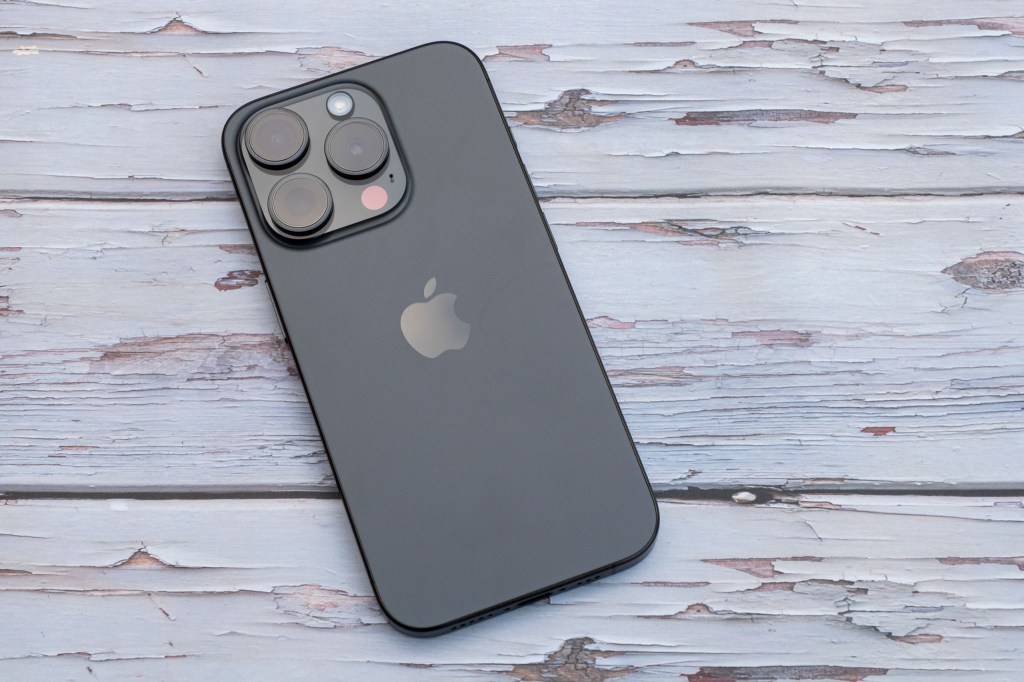
Amateur Photographer verdict
Though improvements over its predecessor are more for usability than for image quality, the iPhone 15 Pro joins the 14 Pro among the best iPhones for photographers.- Triple lens setup
- 48MP main lens, 24MP default output and zooming options
- USB-C charging
- Expensive
- Improvements to cameras are minor
It goes without saying that Apple’s smartphones are incredibly popular. This flagship sees a 3x lens setup, with the main offering a 48 megapixel resolution. It’s available in two sizes, the standard Pro and the larger iPhone 15 Pro Max, without sacrificing on camera quality if you opt for the smaller device. This is something other manufacturers don’t offer, with smaller devices tending to come with a camera sacrifice of some sort. This may mean that the iPhone 15 Pro better suits those with smaller hands or who don’t want a cumbersome smartphone to fit in their pocket.
In terms of portraits, the iPhone 15 Pro/Max has a dedicated Portrait mode which gives you the opportunity to shoot at 1x, 2x or 3x, depending on how you want to frame your shot, while also creating a blurred backgrounds. Portrait has been improved for the iPhone 15 Pro series. Called “Next generation portrait mode”, the big news here is the ability to automatically recognise portrait subjects (humans and pets) when shooting in the main camera mode. This means you can turn it into a portrait after the fact if you want to – again, this isn’t something that has so far come to iPhone 14 Pro and older.

Critics of the iPhone often point to its relatively simple native camera app, with no Pro or Advanced mode available. However, you can shoot in Apple’s ProRAW format if you want some increased flexibility – though as with other smartphones, not in the Portrait mode. Again, shooting with the telephoto lens and raw switched on is a way to get around that somewhat.
We again here have a Night mode which can be combined with the Portrait mode for good portrait shots after dark, but, here again it’s the 1x setting which produces the best results in such conditions.
This is not the newest iPhone, with the iPhone 16 series having more recently been released, including the flagship iPhone 16 Pro/Pro Max, as well as the slimmed-down iPhone 16e. However, the big phones haven’t seen much improvement in terms of their portrait-shooting capabilities, and the iPhone 16e is a little too compromised, so we’re sticking with the iPhone 15 Pro as our recommendation here for now – there’s a good chance you’ll be able to find it cheaper.
Read our iPhone 15 Pro Review.
Best premium
Best premium phone for portraits: Xiaomi 15 Ultra
Amateur Photographer verdict
With a 1-inch sensor and Leica-made lenses, the Xiaomi 15 Ultra continues to set itself apart from the competition, photographically speaking.- One-inch main sensor
- Four high-quality lenses
- Multiple portrait options
- High price
- Selfie camera still doesn’t have AF
- Not available everywhere
Xiaomi’s smartphones are made in collaboration with Leica, and this means that they offer some serious chops in photographic terms. The Xiaomi 15 Ultra is the best one yet – its main camera uses a 1-inch type sensor, the same size that you’d find in premium compact cameras, and Xiaomi’s are the only phones on the market to do so. This is paired with an ultra-sharp Leica-made lens, delivering stunning image quality.
In terms of portraiture, the Xiaomi 15 Ultra offers a flexible range of portrait-shooting modes. It’s a little simplified compared to the previous Xiaomi 14 Ultra – whereas before you used to be able to pick actual focal lengths, now you choose between shooting at 1x, 2x, 3x or 4.3x. You also have the option to fine-tune your bokeh quality for the defocused areas of images.

The selfie camera is decent enough – it still lacks autofocus, which is a shame on a flagship phone like this, but it produces dependably decent results. Back on the main camera, you can take advantage of Pro mode to take control of key settings, or there are also some interesting pre-made shooting modes – we particularly like “Fast Photo”, which recreates the look of a rangefinder for a vintage feel.
This is a stunning phone in photography terms, and definitely gives the best portrait results. The only reason it’s not our top pick is because it’s not only expensive but also hard to get old of, with limited availability in many territories. If you can get one, we’d unhesitatingly recommend it.
Read our Xiaomi 15 Ultra review
Best small phone
Best smaller phone for portraits: Google Pixel 9 Pro
Amateur Photographer verdict
A small flagship phone with great build quality and camera features that does a fantastic job in most situations.- Great image quality
- Improved selfie camera
- No compromise for smaller screen
- AI features such as Add Me are great fun
- Higher price than predecessor
- Average macro performance
- Expensive for additional storage options
- No true 8K video recording
Pixel phones were early exponents of excellent portrait modes, with the company working with machine learning to produce fantastic results for some time. It’s worth mentioning that Google has made a point of building its training set with a multitude of nationalities and skin-tones for what it says is better face-recognition and tone-processing than some of its rivals for non-white subjects, which is something other manufacturers can sometimes struggle with.
The Google Pixel 9 Pro has a triple-lens camera setup, featuring a 1x, 0.5x ultrawide and a 5x telephoto lens. For those digital zoom options, Google uses Super Resolution zoom multi-shot technology. The 1x lens sits in front of a 50MP 1/1.31-inch sensor, and has an f/1.68 aperture. It offers an equivalent of 24mm.
It’s a shame not to see a larger sensor coming to a Pixel phone yet. The ultrawide has a 48MP 1/2.55” sensor, with a slightly improved f/1.7 aperture (it was f/2.0 for the Pixel 8 Pro) and a 12mm equivalent focal length. The telephoto also has a 48MP 1/2.55” sensor, with an f/2.8 aperture, the zoom is a 5x zoom, with the equivalent focal length displaying as 110mm (which is just shy of 5x). It should be noted that despite all of these high-resolution sensors, the standard output is 12MP from each, due to pixel binning.
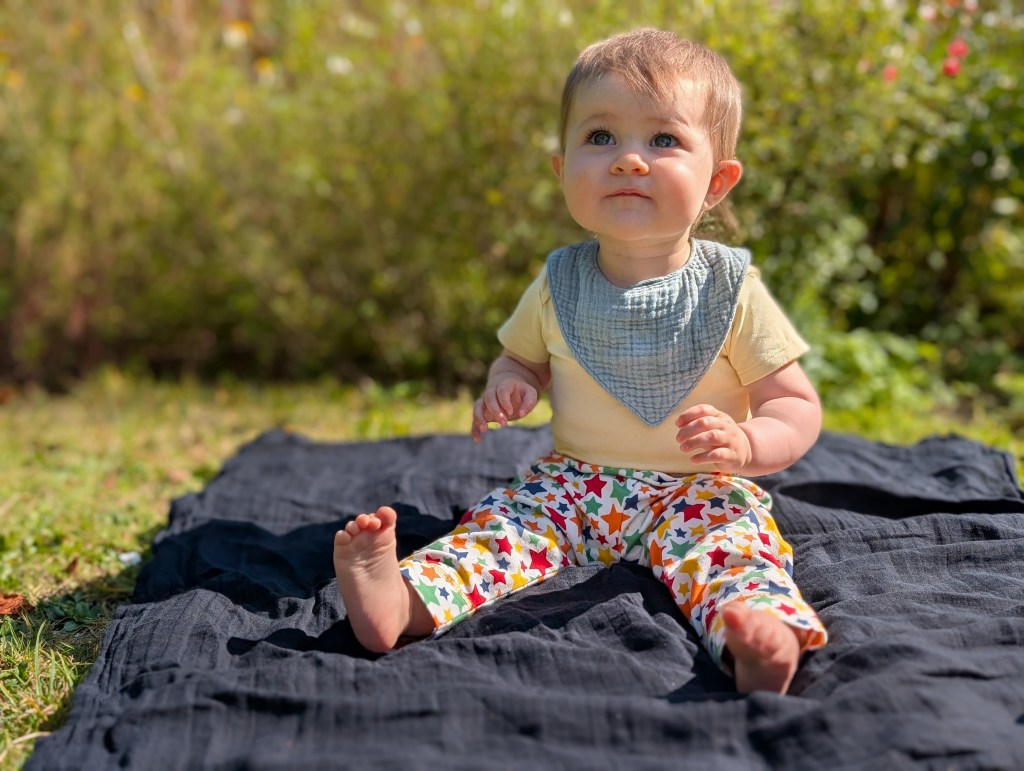
Other improvements compared to the Pixel 8 Pro come largely to software. That includes an updated HDR+ feature for better colours and skin tones, improved exposure, sharpness, detail, contrast and more. Great news for portraits. Google also claims there have been improvements to low-light shooting, with some new functionality including Night-sight panoramic photos.
If portraits and people is your favoured subject, it’s hard to beat the vast array of tools that the Pixel offers. Portrait mode is very good, though I’d like to see a few more options available – such as being able to shoot at a longer focal length, or have different blur or lighting modes, such as we see from most other smartphones. What is created though has fairly realistic outlines, especially if you don’t scrutinise your images too closely.
At launch, the Google Pixel 9 Pro price is £999 for the lowest storage option, rising up to £1219 for the 512GB option (1TB is not available for the 9 Pro, only the 9 Pro XL).
Read our Google Pixel 9 Pro Review.
Best cheap phone
Best cheap smartphone for portraits: OnePlus 12
Amateur Photographer verdict
The OnePlus 12 retains its ‘Hasselblad Portrait Mode’ and is the cheapest model in this list; having undergone all-round improvements to its cameras.- Hasselblad portrait modes
- Pro mode
- Good value for a flagship
- Short telephoto lens
- Selfie camera fixed focus only
- Raw shooting only in Pro mode
The cheapest smartphone in our group, OnePlus prides itself on providing flagship specifications for mid-range pricing. They pride their phones on their cameras, which makes them very appealing to photographers who may be less fussy about other aspects of a smartphone that add to their cost.
The main camera has a 50MP Sony LYT-808 1/1.4” sensor, a sensor which is brand new and used here in the OnePlus 12 for the first time in the smartphone market. It’s fronted by a 23mm equivalent f/1.6 lens, which includes optical image stabilisation. This sensor is bigger than that found in the OnePlus 11 and is therefore said to be better for low-light shooting.
A further two cameras comprise of a 48MP Sony IMX581 1/2” sensor with a 14mm f/2.2 equivalent ultra wide lens, plus a 64MP Omnivision OV64B 1/2” sensor with a 70mm f/2.6 equivalent 3x zoom lens which also has the ability to 6x zoom digitally in-sensor, and 120x digitally overall. This 3x length is longer than the 2x length of the OnePlus 11,
The specific “Hasselblad Portrait Mode” is retained: designed to recreate the look of Hasselblad XCD 30mm and 65mm lenses (1x and 2x, respectively). This creates a shallow depth of field effects; designed to recreate the look from using certain Hasselblad lenses. You can shoot at 1x, 2x or 3x focal lengths, to give the effect of using 30, 65 or 90mm Hasselblad lenses. Consider this an “impression” rather than the real thing and you won’t be disappointed.
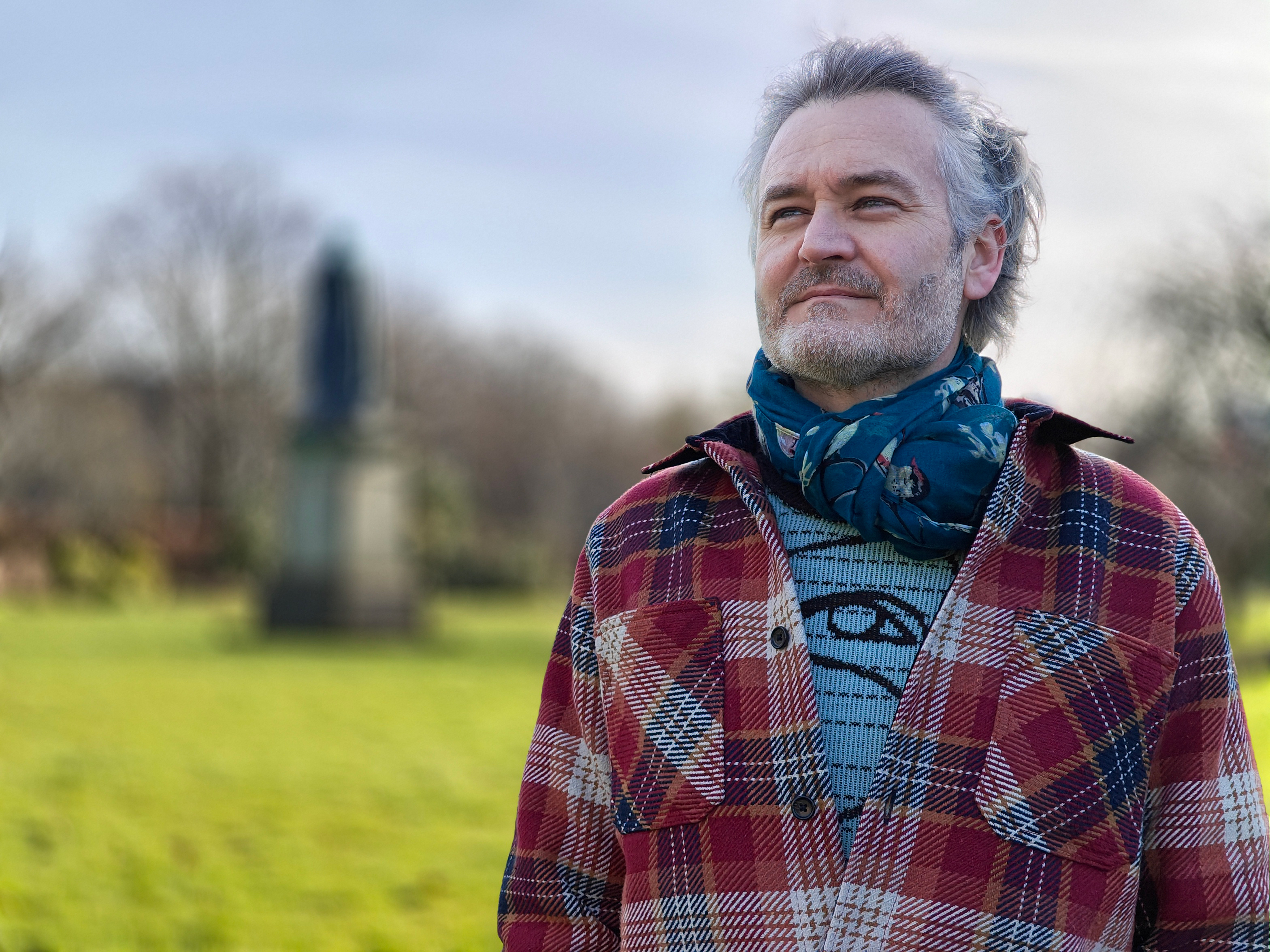
The lenses in the OnePlus 12 benefit from a special lens coating which is designed to reduce flare. You can also choose to use Portrait mode in selfie orientation if you want a shallower depth of field job.
Read our OnePlus 12 Full Review.
Tips for shooting portraits with your smartphone
Try these ideas with your smartphone next time you’re giving portraits a go
Use portrait mode for non-human subjects
Remember that portrait mode can generally be used for non-human subjects. This is great for photographing pets to really bring out their character. You can also use it to create shallow depth of field effects with other subjects, such as still life too.
But don’t just use the dedicated portrait mode
As mentioned in our round-up, try using other modes, rather than just portrait mode. This way you can achieve other things, such as shooting in raw mode for example.
Try different lighting and blur effects
Lots of Portrait modes have different effects you can experiment with, including different levels of blur, different types of blur/bokeh and different lighting effects. It’s worth getting to know all of these so you can approach your portraits creatively. Digital filters, such as black and white, also come in handy too.
Give burst mode a go
When photographing fast-moving people (such as children), activating a burst mode can be a good way to get a candid portrait that occurs in a split second. Usually this involves holding down the shutter button to take several shots in quick succession. Most modern smartphones will even automatically choose the best result for you.
Include some context
Using some of your subject’s background is a good way to show more personality in your portraits rather than just a straightforward headshot. That’s especially true if you can include some kind of environment which means something to the sitter – such as a place of work or favourite location. Be sure to try switching to 1x mode and see what results you get.
Consider accessories such as reflectors and ring lights
There are a number of useful portrait accessories that can work very well with smartphones, including reflectors – to bounce light (including of different tones) back at your subject for more even coverage, and ring lights, which work particularly well for selfies.
Treat the smartphone like any other camera
We can often get hung-up on thinking of a smartphone as not a “proper camera”. Remember it’s you that makes the pictures and approach a portrait sitting just as you would with anything else, remembering composition, direction, and even other elements such as costumes, make-up and props.
How does portrait mode work on a smartphone?
Although you can take portraits with the standard shooting setting on your smartphone, many will choose to use the dedicated Portrait mode (sometimes it will be called something else).
It’s only with these modes that you’ll be able to recreate the effect of shooting with a wide-aperture lens. How this essentially works is the phone will take data from two or more of its lenses to create a depth map and use edge detection to figure out what should be in focus and what shouldn’t.
Machine learning and computational photography helps create the end result, which isn’t as reliably smooth as using real hardware, but can create pretty convincing effects – especially when you’re only viewing images at small sizes or on social media sites such as Instagram. Sometimes fussy outlines can prove to be a problem – such as if someone has fairly fine hair. Sometimes you might also see some features, such as ears, disappear when they shouldn’t.
It tends to work best with humans and animals (pets especially) that smartphones have been trained to recognise easily, while still life subjects can be a bit more hit-and-miss. That said, results have on the whole improved a huge amount since portrait modes were first introduced, with smartphones better able to understand what they’re looking at as time progresses. As technology continues to advance, we can only assume they’ll continue to get even better.
How we test smartphones for photography
We review smartphones from the perspective of choosing a smartphone for its photography and camera performance, so we test every phone by looking at what it offers in terms of the cameras and what features are included for photography and video, and how it performs in real world use in a variety of different shooting situations.
We test each camera on the phone, whether that’s the ultra-wide angle, the main camera, telephoto camera(s), and selfie camera, and use the phone for photography in a range of lighting conditions, including low-light, where camera phones can struggle. We also look at specialist shooting modes on offer, including portrait modes, as well as look at how good the overall phone is, in terms of battery life, screen and build quality.
Read our latest smartphone reviews and find out how to take better smartphone photos. On a budget? Have a look at our best budget camera phones list.
Related reading:
- Best portrait tips from the pros
- Samurai spirit: how I mastered portrait lighting in three months
- Top tips for fine art portrait photography

